|
By Laura Cockerille Giannini When my husband Pete and I moved from Virginia to Abiquiu ten years ago, we bought a charming fixer-upper that hadn’t been lived in for over two years. So we inherited a bounty of wildlife that had made this sturdy house their home: birds galore; a large bull snake we came to dub ‘Toro’; a hive of native honeybees in our outside entry wall; woodpeckers nesting in the rafters (getting in through air vents along the eaves), waking us up each morn with their rat-a-tat-tat directly over our heads. I laughed aloud with our morning wake-up calls, but Pete growled: “That ain’t gonna’ last!” and out came the hardware cloth to cover the air vents over our eaves. What we also inherited was what we came to learn was a collected bounty of brittle Russian thistle, along with puncture vines (evil goat heads - another story, altogether) that grew profusely all the way to our front patio entry. My turn to say “That ain’t gonna’ last!” And, with leather gloves, we pulled the thistle and goat heads out, bagging them, and I vacuumed up the fierce seed that look like a Covid virus turned brown and hardened, making my own rat-a-tat-tat up the nozzle, as I ruined the vacuum cleaner. During our first month learning of desert living, we had hired the Ortega brothers – Paul and Vernon, out of Coyote – to put in a beautiful, rounded stone patio, surrounded by the Seagreen junipers a former owner had generously planted for privacy and as a windbreak. Now we would be able to stand outside our portal and enjoy the impossibly huge starscape above our heads, feet and legs protected. In the East we are faced with a bounty of verdant hungry vines like honeysuckle and greenbriar, spread by birds, but we had never seen anything so invasive as tumbleweeds!! But Pete and I are workhorses and can envision what a property can be, not what it is at the moment, so we began reclaiming both the inside and outside of our 8-acre property we came to name Casa Paloma – a home of peace – after the mourning doves nesting in the juniper by our back patio. When our spunky youngest daughter was tiny, she surprised me one day when I requested her to do something. Chelsea piped up, claiming: “Mom, you are not the boss of me.” I laughed and assured her that until she was old enough to take responsibility for herself, that indeed, I was the ‘boss of her’. That story continues, but the gist of it is that in order to face the invasive species known as Russian thistle in your yard, gardens or fields, one must steel yourself for a steady battle ahead and become the boss of this plant. Your challenge will be mighty, as this weed – like ants, cockroaches, rats and flies – will outlive whatever mankind might do to destroy himself and our earth – but let me assure you, from our decade of experience, it can be done. Origins of the dastardly tumbleweed in America: “Salsola tragus”, the Latin name for Russian thistle, native to Eurasia, is believed to have been introduced in the 1870s in South Dakota by a shipment of contaminated flaxseed out of Russia. Being the extremely prolific invader that it is, it took hold and quickly spread throughout the Central and Western United States, including California, via railroads and waterways – and, of course, it’s infamous spreading of its wicked seeds, as it is tumbled by the winds. And, as we know only too well here in northern New Mexico, these opportunistic seeds can happily blow handily from one county to the next! I cannot stress this enough: The key to becoming the boss of this stubborn plant is to “Eat the elephant” (I would so much prefer another analogy), but start somewhere, anywhere, and keep working away until your thistle-load becomes smaller and smaller. Thistle facts: Russian thistle has several other monikers: It is also known, of course, as the iconic tumbleweed of many a western movie. Common saltwort is another name. One of my descriptive favorites is ‘wind witch’. I have also personally come to call it the ‘Putin plant’, from both its origins and its invasive habit of usurping everything around it and absolutely taking over, with no conscience, whatsoever. It is in the Amaranth family. A native North American species, Amaranthus albus, is not considered the ultra-invasive species that is Salsola tragus (as in tragedy, I do believe). One medium-sized mature thistle ball can develop a quarter-million seeds (!!!), as it matures into a large, dry plant in the fall, ready to loosen its moorings and rock and roll across the landscape, joyously spreading its progeny as she flies on by. Combine this ability to propagate with our exuberant winds of winter and spring, and well, you get the picture… Seeds sprout in the spring, anytime as daytime temps reach 68 degrees consistently, with night-time temps around 40 degrees – as in right about now. I plucked our first just a day ago. The seeds (I happen to firmly believe) have a 110% germination rate and thrive in our arid, alkaline desert sands. Young tumbleweed seedlings looks quite a bit like a young aster plant. I am a gardener and have a hard time telling them apart, but am careful at this stage because I’m trying to naturalize the beautiful lavender and purple flowering asters on our property again. ***One telltale difference is that the young thistle has a purple or maroon stem. This plant is an annual, meaning each year seeds are its main means for replenishing itself. That said, I understand that it can also return from its roots, which would then make it a perennial (returning, unseeded, from the original plant). Our experience, however, is that pulling the weeds or ground-burning the plants will greatly reduce their reappearance. Controlling the dastardly weed: Plan A – Early growth. Once the Putin plant does germinate and grow it is a lacy-looking deep green seedling that quickly fills out. At this point, with the maroon stalk, it is easy to differentiate it from an aster and is easy to pluck out by its tender roots. Hint: After a rain is a good time to weed these (and goat heads), as the ground is much more forgiving. One might also wet the ground before weeding. When the plant is young, it may actually be grazed by livestock, as long as large quantities aren’t consumed. They flower in the early summer – a tiny lavender bloom – and if the larger plants are pulled by late June this will prevent the seeds from maturing later in the fall. But, note to the wise, the older the plant, the more prickly it becomes, so wear gloves! Pete and I are in Virginia during the summer and so hire a gardener to continue grooming/weeding our grounds. We return in the fall. (I could write yet another article on our adventures of finding a capable summer gardener, who actually recognizes Russian thistle, goat heads, pig amaranth and horse nettle – the big four weeds we try to eradicate each year. Last summer we had a terrific housekeeper who also wanted to garden and weed, but had not a clue how and later a high-testosterone young man with a large weedeater who crew-cut our field of beautiful mixed desert grasses we had nurtured, but left thistles and goat heads alive and well beneath the weedeater, to happily continue to grow laterally and seed themselves. His cluelessness and enthusiasm reminds me very much of Elon Musk’s wild-eyed chainsaw madness at CPAC.) Anyway… Because of the wonderful monsoon rains last summer allowing everything to grow and thrive, Pete and I had to make two ‘emergency weeding trips’ – I kid you not – to Casa Paloma from Virginia in 2024, to roll up our work sleeves and tame the land. This is how dedicated we are. If one has not been diligent with hand-pulling young plants, or later getting a trowel or spading shovel under more mature ones of late summer, then the seeds will ripen and the tumbleweed will start to turn rigid and become browner, as it matures. At this point, usually by the time Pete and I return to Abiquiu in the fall to stay on, we resort to Plan B. That is to pull out the big guns and resort to fire. Plan B. Basics on how to burn tumbleweed safely: First of all, I want to emphasize safety. To properly burn in Rio Arriba County (or any other county you happen to live in), one must apply for a burn permit with the Fire Marshall. In Rio Arriba, the number is: 505-747-6367. Call to can get an application for open burns. Burns are allowed only on weekends (when the fire stations are staffed with more personnel) and are banned on holiday weekends, or when the Fire Marshall deems conditions unsafe for an open burn. Once you have a burn permit, you must call the designated number a half hour before you begin your burn, giving your name, address and the burn number on your permit. There are hefty penalties for those who do not comply. Still, even working with the Fire Marshall’s rules, common sense is required. Have a working hose active when burning; use any winds to your advantage; wet-down highly flammable plants (like chamisas, snakeweeds and tall grasses) you want to keep from scorching before the fire gets close. This way, you can burn right up to one of these plants and not hurt that which you value. Tools required by the Fire Marshall and you will need for burning: A working nozzle and hose long enough to reach the area(s) you want to burn. A propane ground-burning torch and propane tank, as well as a lighter of some sort, like a clicker or torch with built-in clicker (you might find this at Lowes or Harbor Freight). A shovel, heavy-duty rake and pitch fork are required, as well as heavy gloves to protect your hands, both from the fire and from the mature thistle’s nasty prickly seeds. Pete and I are hardcore and very serious about our thistle management. Years ago we put up a permanent burn pen or corral, open to our predominant WSW winds off of Pedernal. We used 50’ of 2” x 4” dog-fencing wire, 4’ tall (5’ would be even better) with six steel stakes to anchor it. This way, we can gather tumbleweeds during the week and hold them here until we’re able to burn. Part of the 50’ of wire is a gate we can open or close as needed to contain the weeds (of any kind, actually). We use heavy juniper latillas or 2 x 4’s to secure the thistle from blowing over the fence, until we can burn. For smaller quantities of thistle, a burn barrel is great to torch them. Remember that hose! When we first moved here and were tumbleweed greenhorns – and had so much thistle over our 8 acres – I made a large map of areas designated for reduction. Still have it. We would choose an area, starting close to our home, then working our way further out, eventually coming to know areas to pinpoint for a weekend burn. Because of our diligence, and replanting native grasses and wildflowers to fill in areas we had cleared (more on this upcoming), each year our burns are reduced. We can encompass a larger area now each weekend, because there is more grassland and less tumbleweed. I promise you, it is a very rewarding feeling of knowing that, gradually, you are overpowering this wicked weed. Note: Russian thistle seeds, like goat head and other nasties, can also arrive on tires, shoes, hiking boots and paws, so eradicating it will be a continued battle, but a war with smaller and smaller skirmishes as time goes by, if one stays with and on top of your game. Reclaiming your property: You may have, as we had, large open areas thick with thistle that need to be gradually whittled down. If this is your situation, burning – carefully, please – is recommended. One can set up a burn pen and also use it to haul loads of collected tumbleweed TO the pen. We have another 8 acres of land across the road from us where our hose does not reach. Only occasionally, after fall or winter snow or rainfall adding moisture to the ground, do we burn in place on this land. Instead, we take a wheelbarrow up there with a tarp inside of it. Over the course of a couple of hours, we carefully open the tarp and collect large and small Putin plants, opening the tarp evermore as we go, gradually filling it until it looks like a huge loaf of leavened bread. Over our decade here, we have collected well over a hundred wheelbarrow loads of thistle, gradually, too, reclaiming this large, open field and reseeding it with desert grasses, chamisas, snakeweed and the like. It is important to know that as the cold weather progresses, these nasty plants become ever more brittle, snapping and popping off the mother plant, trying to jump over the edges of the tarp. I cannot stress enough the importance of becoming absolutely anal, at this point, if you are truly serious about long-term eradication. Capture ALL of the seed to bring back to your burn pen. One tiny broken-off seed will become a monster next year, if left unchecked. So Pete and I actually, literally, get on our knees, scooping up loose seeds and sand to collect inside our trusty tarp. It pays off. We have now ‘harvested’ well over 120 wheelbarrow loads off this land, in these ten years, 8 alone since January of ‘25. Another pointer, while working, is that this is a good time to harvest the seedheads (using gloves, please) from grasses, snakeweed and chamisa around you to spread the natural desert vegetation you DO want. This way, you won’t have to pay for these expensive seeds. Nature loves to help. Once you have a full load of Russian thistle, wrap the tarp and carefully close it so there are no sneaky leaks. Haul it to your burn fencing. Once unloaded, it is important to weight down your harvest with latillas or boards – something heavy and convincing – to keep your tumbleweeds from doing what they do best – the ‘wind witches’ that catch the breeze and free themselves, laughing at your futile human effort. So anchor them well! ( A tarp over your fencing isn’t a bad idea…) When a burn weekend arrives, you will have a fine collection to light up. Believe me, this gives one great satisfaction that I cannot describe until you experience for yourself the joy of torching a gazillion million thistle seeds, hearing them snap, crackle and pop straight to hell, where they truly belong. ***A precaution before you burn your load is to wet down the land outside your burn fence to prevent the heat/fire from spreading beyond it. Start your fire from the lee side and let it burn back into the fire; it is not quite as intense, this way. Be sure you have your shovel, rake and pitchfork on hand, of course. (Another trick we learned from experience is to be sure to close the windows to your home, if you are burning anywhere close to it. An unfortunate live and learn!) Reasons, other than aesthetics, to reduce your thistle-load: Russian thistle can be a potent allergen to some people, much like ragweed, chamisa and juniper pollen, causing hay fever &/or breathing issues in the spring and early summer as it pollenates. Russian thistle can be poisonous to dogs, when ingested. Get immediate vet care. Russian thistle can also be a host to curly top viruses that stunt the growth of plants it infects, deforming leaves and fruit. When mature, dried tumbleweeds blow and collect in an area, becoming an extreme fire danger. With our intense spring winds of late, it has collected along roads and lies awaiting a flame. After our monsoon season last summer, the Putin plant ballooned. Now we have masses of them blown deep into our junipers in Prado Valley Ranch, where we live. As these mountains of thistle dry, they become Roman candles if a wildfire ever starts, to be the fuel to burn hot and heavy and deeply into the junipers that have stopped its path, potentially taking them out, as well, carrying the fire closer to homes. *** Taking care of the thistle load on individual properties lessons the entire thistle load in a community – and again, it can be done. Overplant with natural desert grasses and wildflowers: Once you’ve cleared areas of thistle, it is very important to reclaim your open land(s) with vegetation. The more densely-rooted your ground is with desirables, the harder it is for the Putin plant to overrun it. (Pretend you’re NATO and these good guys are the enforcers…) Thus the harder it is for tumbleweed to take its hold. We bought our original grass and wildflower seeds from Plants of the Southwest, where one can buy various natural desert grasses such as Blue Grama, Buffalo grass and Indian Ricegrass that used to nourish the Natives who lived before us. Visit their well-stocked nursery at 3095 Agua Fria, in Santa Fe. Gail, who has owned this wonderful nursery for fifty years, next year, is a fountain of information. Their number is: 505-438-8888. All told, I do want to emphasize that after I’ve written this article to help you learn about – and control – the Russian thistle on and around your property, I do want to say what an absolute joy it is when you witness your results. After each of our fall/winter ‘touch-ups’ we now see fields of native grasses like Blue Grama, with its delicate crescent moon seed heads, shimmering golden and backlit against the setting sun, or lovely Indian Ricegrass covered in tiny, pale seeds all adrift atop the tall grass, or Little Bluestem, the grasses turning colors of orange and maroon in the fall, with their fluffy seed tops… I cannot tell you the huge satisfaction it is to enjoy this natural desert bounty, instead of the mounding, prickly brown rounds of tumbleweed. And I smile: Yes, we have finally become the boss of that evil, invasive plant – even if temporarily and at least on our land – and it is a fine feeling, a rewarding accomplishment, indeed. Laura Cockerille Giannini is a local resident and author of The Kokopelli Journals, “A Southwest (mis)adventure of discovery, compassion, empowerment… and mischief”, of which a screen adaptation has been written but is not yet in the works. Laura is currently working on another book capturing their ten-year adventures of life here in Abiquiu. She is also a poet, gardener, animal portrait/landscape artist and photographer.
1 Comment
Ed Hansford
4/11/2025 09:49:27 am
Thank you for this very informative, thorough and fun to read piece! The struggle is real as they say. The renaming of the tumbleweed and now calling it the Putin plant is just perfect. Now please tell us how to deal with the ubiquitous cheat grass!
Reply
Your comment will be posted after it is approved.
Leave a Reply. |
Submit your ideas for local feature articles
Profiles Gardening Recipes Observations Birding Essays Hiking AuthorsYou! Archives
October 2025
Categories
All
|
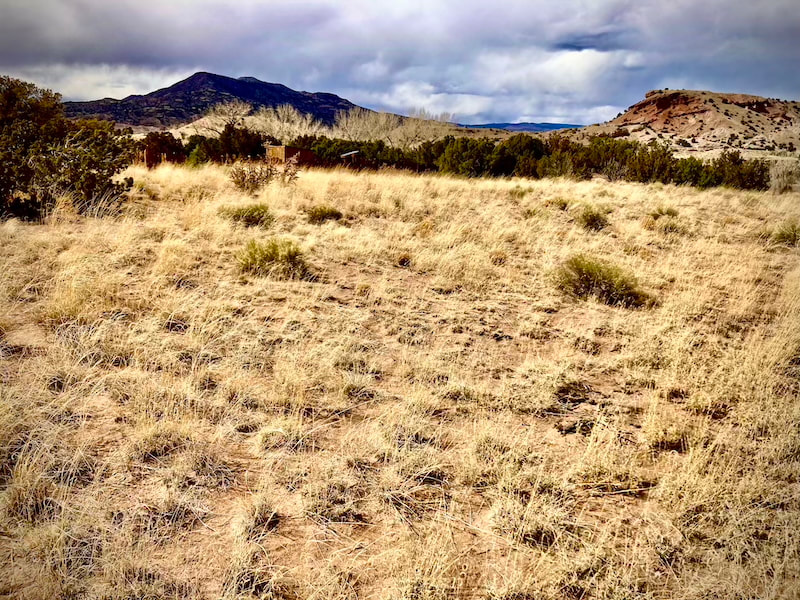

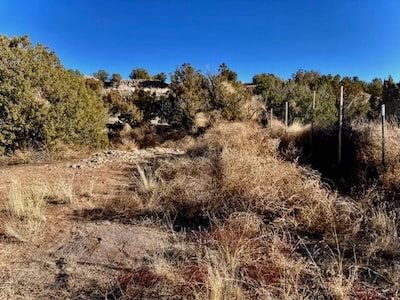
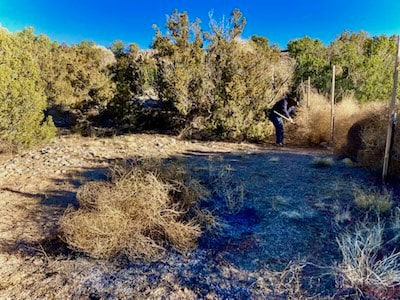
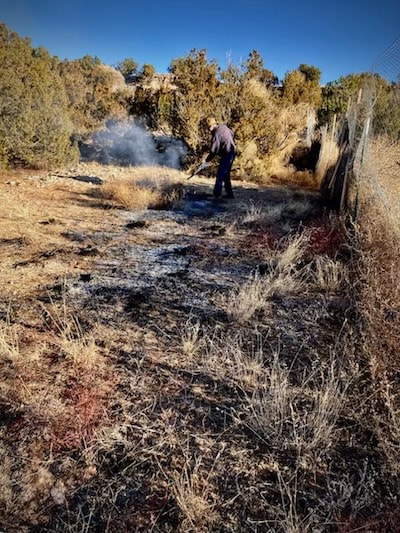
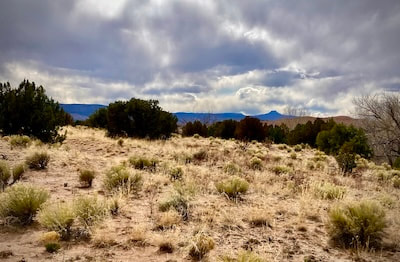
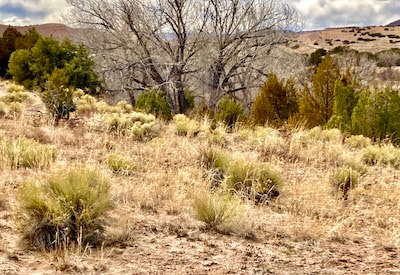
 RSS Feed
RSS Feed